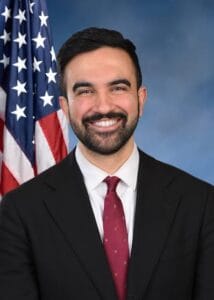DEC announces actions to protect salmon river fish populations

The New York State Department of Environmental Conservation has announced actions underway to mitigate the impacts of low water flows along the Salmon River during the upcoming salmon run that draws thousands of anglers each year.
While disclosing this on Tuesday September 15, 2020, DEC announced the release of new angling regulations and recommendations.
According to DEC, the new regulations will prevent the spread of COVID-19 and ensure the health and safety of both natural resources and the public.
“The Salmon River supports the largest fall runs of salmon and trout in New York, and is one of the state’s most heavily fished waters,” said Commissioner Seggos.
“The actions announced today are necessary to ensure continued water flows to sustain the salmon run and fishery, and to enable spawning salmon to reach DEC’s Salmon River Hatchery and support ongoing stocking efforts,” he added.
DEC also ensures that visiting anglers are aware of new angling regulations and recommended practices to prevent the spread of COVID-19 as they plan their trips to enjoy New York’s premier angling opportunities.
“We encourage anglers to enjoy New York’s renowned fisheries, but we ask that you please do so safely and responsibly to protect fellow anglers and local communities,” it said.
It added that this summer, below-average precipitation has resulted in low and declining water levels in the Salmon River Reservoir.
The Executive Committee of the Salmon River Flow Management Team, comprised of natural resource agencies and Brookfield Renewable hydroelectric facility that regulates reservoir water levels, canceled scheduled whitewater releases over the Labor Day weekend and delayed the annual Sept. 1 increase in baseflow.
These actions will conserve reservoir water to maintain suitable flows throughout the salmon spawning run.
Additionally, the popular Lower Fly Fishing Section, situated just below the hatchery and typically where large numbers of salmon and anglers congregate, will not open on Sept. 15, and will remain closed until further notice.
Under a federal license, Salmon River seasonal baseflows are typically increased from 185 cubic feet/second (cfs) to 335 cfs on Sept. 1, providing that water levels in the Salmon River Reservoir (SRR) are above a critical threshold.
The SRR level is currently below that threshold, requiring cancelation of a scheduled white-water release over Labor Day weekend.
In addition, significant rainfall is not forecasted for the near term, prompting DEC to recommend a delay in the scheduled baseflow increase.
DEC’s recommendation is based on abnormally high water temperatures coupled with low water flow in Salmon River tributaries, including Beaverdam Brook where migrating Chinook salmon access the DEC Salmon River Hatchery for egg collections that support the State’s successful stocking program.
Increasing baseflows prematurely would likely entice Chinook salmon currently “staging” in Lake Ontario to enter the Salmon River on their spawning migration, which could strand and/or kill fish if temperatures remain high.
These fish cannot reach DEC’s hatchery until rainfall sufficiently raises Beaverdam Brook water levels.
To increase the probability that sufficient numbers of salmon reach the hatchery to sustain the salmon stocking program, DEC will close the Lower Fly Fishing Section to fishing on Sept. 15.
This section will remain closed until DEC collects sufficient numbers of salmon eggs at the hatchery.
Anglers are encouraged to experience New York’s other exceptional Great Lakes tributary angling opportunities.
These waters are often less crowded and offer anglers the chance to play a bigger fish in a smaller river.
DEC reminds anglers that several new Great Lakes tributary angling regulations became effective on April 1, 2020.
The minimum size limit for rainbow trout/steelhead caught in Lake Ontario tributaries was increased from 21” to 25” (still 21” in the lake).
In addition, only one brown trout can now be kept as part of a Lake Ontario tributary angler’s daily creel limit of three salmon/trout in combination.
For Lake Erie, fishing is no longer prohibited from Jan. 1 through March 31 on Spooner Creek and its tributaries, and North Branch Clear Creek and its tributaries from Taylor Hollow Road upstream to the outflow of Clear Lake.
Anglers are also encouraged to be respectful of the resource and other anglers by using ethical angling techniques.
This fall, Great Lakes tributary anglers should be mindful in taking precautions to stop the spread of COVID-19 while enjoying the outstanding salmon and trout fishing on Lake Erie and Lake Ontario tributaries, including the Niagara River.
At popular angling destinations, especially the Salmon River in Oswego County, angler density can become high enough to make social distancing difficult.
DEC is placing signage at popular locations reminding anglers to be smart when fishing this year.













